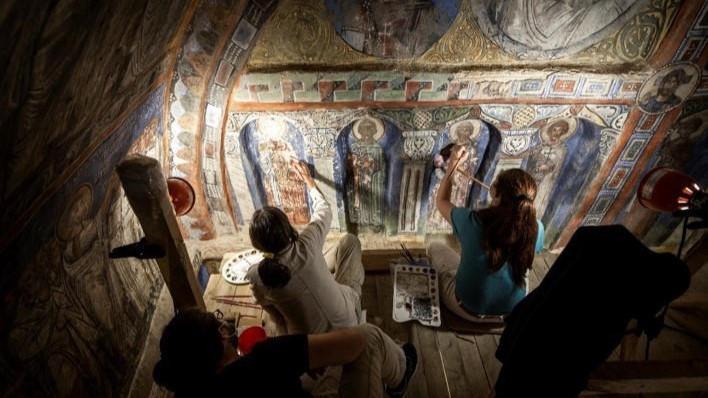
A team of Turkish, Italian and Japanese historians and scientists has announced the adoption of advanced methods for preserving historical wall paintings in the Central Anatolian region of Cappadocia, famed for its fairy chimneys.
"The murals in this region are among the most exquisite fragments of our cultural heritage. The initial mural conservation project in Cappadocia began in 1972 at the Tokalı Church, with subsequent preservation efforts completed at the Karanlık Church, Elmalı Church and the Forty Martyrs Church," remarked Kübra Karaalioğlu, the deputy governor of Nevşehir.
Currently, five distinct conservation and restoration projects are underway in the central Anatolian province. These projects are being conducted with utmost precision to preserve the unique historical and artistic fabric of the Cappadocia region and to ensure its transmission to future generations, she said.
Dr. Paola Pogliani, a faculty member at Tuscia University in Italy who supports the efforts in Cappadocia, emphasized that the primary aim of the project is to create a research network focused on the ancient history, archaeology and conservation science of Western Asia by integrating eight research institutes from Japan, Italy and Türkiye.
The Turkish, Italian and Japanese teams each have specific roles in the preservation of these historical treasures, Pogliani said.
Yoko Taniguchi, a faculty member from the University of Tsukuba in Japan, detailed, "Our Japanese team worked from 2014 to 2016 on the conservation of the rock-carved cave and mural of the Üzümlü Church in the Red Valley.
The Japanese team’s research concentrated on understanding how the region’s fragile tufa deteriorates and how to extend its lifespan. Additionally, it addressed aesthetic concerns resulting from historical scratches and graffiti on the frescoes.
“Our goal was to minimize the visibility of graffiti by reducing its tones, thus making it less obtrusive,” Taniguchi said.